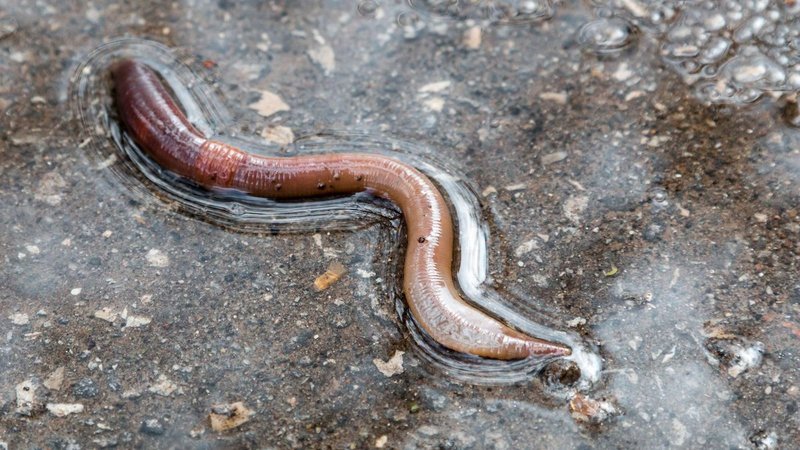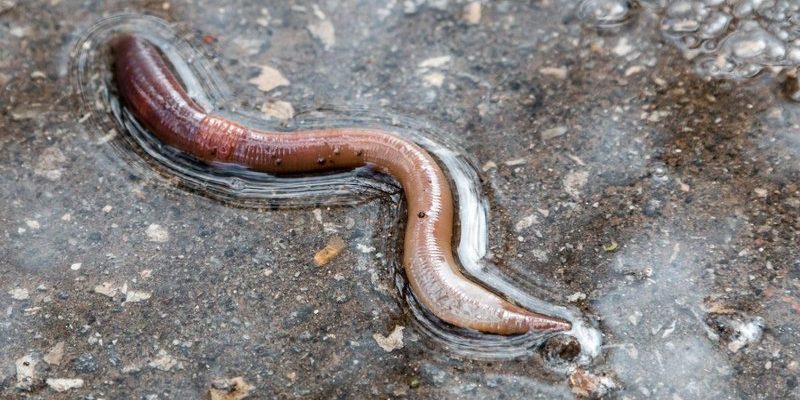
Let’s think about it this way: imagine living in a world filled with waterlogged tunnels and flooded rooms. You’d definitely want to escape! For earthworms, when the ground becomes saturated, they face a similar predicament. It’s a matter of life and death. They emerge seeking safety, and moreover, they also take advantage of the wet conditions to travel and find new homes. So, if you’ve ever wondered how these squiggly friends manage to surface when the skies open up, let’s dive into the reasons behind this fascinating behavior.
Understanding the Earthworm’s Environment
Earthworms live in soil, where they spend most of their lives working through the earth, aerating it and processing organic matter. This underground habitat is rich in nutrients, making it the perfect home for them. However, earthworms breathe through their skin, which means they rely on moisture to survive. When the soil gets too wet, their usual habitat becomes flooded, and this can be quite dangerous.
So, what happens when it rains heavily? The excess water fills the tunnels that they inhabit. Imagine trying to breathe underwater—it would be pretty tough! In such conditions, earthworms have no choice but to come to the surface.
Why Moisture Matters
Moisture plays a vital role in the life of an earthworm. Without enough moisture, they can become dehydrated. When it rains, the soil absorbs some of that water, creating a moist environment that’s favorable for them. But too much water can lead to flooding, which pushes them up to the surface in search of drier ground.
Additionally, when they emerge during a downpour, they may benefit from the increased availability of food. The rain can wash organic material down into their reach, allowing them to feast on the decaying leaves and other debris that gets dislodged.
Searching for New Habitats
When earthworms come to the surface after heavy rain, it isn’t just a desperate escape; it’s also a chance for them to explore new territories. By moving above ground, they can find new areas with more favorable conditions. **Here’s the thing**: suitable habitats for earthworms aren’t just about moisture; they need the right type of soil and plenty of organic matter to munch on.
This wandering behavior is somewhat of a risk for them, but it can pay off. If they find a new patch of nutrient-rich soil, it could mean a better life and more food. Think of it like a mini adventure for our squirmy friends!
The Dangers of Surface Life
However, this venture isn’t without its risks. Once on the surface, earthworms are vulnerable to predators, like birds and other animals. So, while they might be exploring, they also have to be quick and careful. They adopt a strategy of risk and reward, where the potential for a better home may outweigh the dangers that lurk.
How Heavy Rain Affects Soil Conditions
Heavy rain can change soil conditions drastically. Soil that is usually crumbly and easy to navigate can quickly turn into a mudslide during a downpour. This transformation makes it harder for earthworms to move around underground.
The **pressure** of the water can compact the soil, reducing the space within those tunnels. When flooded, the oxygen levels in the soil can drop, making it difficult for earthworms to breathe and survive. So, surfacing becomes not just a choice, but a necessity.
Survival Strategy
For earthworms, emerging during heavy rain is a clever survival strategy. They can escape unfriendly conditions while also seeking new habitats full of potential resources. It’s nature’s way of helping them adapt to changing environments. If you think about it, we humans are also pretty adaptable when faced with challenges!
The Role of Earthworms in Ecosystems
You might think earthworms are just slimy little creatures that appear when it rains, but they play an essential role in maintaining healthy ecosystems. By aerating the soil, they improve drainage and promote healthy plant growth. Their presence contributes significantly to nutrient cycling, helping decomposers break down organic material into fertile soil.
So, the next time you see these little guys squirming about after a storm, appreciate them for what they truly are: **nature’s gardeners**. They reduce compacted soil, allowing plants to grow better, which in turn creates more food and habitat for other wildlife.
Earthworms and Soil Health
Healthy soil means a healthy environment, and earthworms contribute to that by breaking down organic matter. They enhance soil structure, improve drainage, and encourage the growth of beneficial microorganisms. When they come to the surface after heavy rain, they can also help aerate the soil at the top layer, allowing it to dry out and eventually return to normal conditions.
So, the next time you notice earthworms surfacing during or after a heavy rain, remember this remarkable behavior isn’t just a random act. They’re responding to their environment and making smart choices for survival. These little creatures are not just surviving; they are actively shaping the ecosystems around us.
Their journey from underground tunnels to the surface is a testament to their resilience and adaptability. They remind us that life is often about balancing risks and rewards. The next time you see one slithering across your sidewalk, have a moment of respect for these unsung heroes of our gardens and fields.

